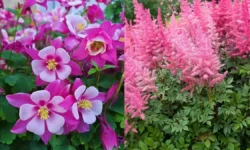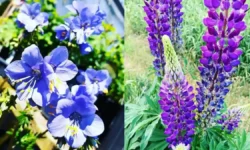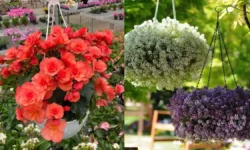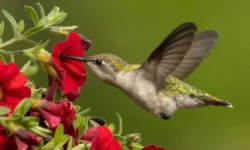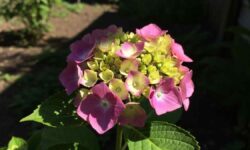Hydrangeas are cherished by gardeners for their stunning, oversized flower clusters and dense, vibrant foliage. However, gardeners often become concerned when they notice hydrangea leaves turning yellow. Yellowing leaves can be an alarming sign, but in many cases, the problem can be corrected with proper care. Understanding why this happens is the first step to restoring your plant’s vibrant green leaves and ensuring healthy, beautiful blooms.
Yellowing leaves are usually a symptom rather than a disease on their own. Environmental factors, nutrient imbalances, or pests can all contribute to this issue. By learning to identify the root cause, you can take action before the plant’s overall health declines. In this guide, we will explore the most common reasons for hydrangea leaves turning yellow and provide effective solutions to keep your hydrangeas thriving.
Table of Contents
Understanding Why Hydrangea Leaves Turn Yellow
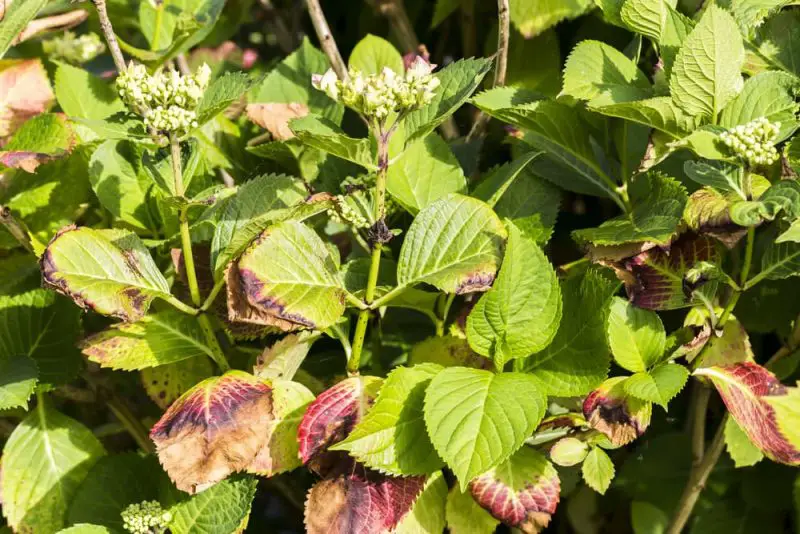
When hydrangea leaves begin to lose their green color, it is often a response to stress. Chlorophyll, the pigment responsible for green coloration, decreases when the plant is unable to perform photosynthesis properly. Stress factors such as overwatering, underwatering, nutrient deficiencies, or even seasonal changes can disrupt normal plant functions, leading to yellowing.
It is important to observe not only the color change but also the pattern of discoloration. For instance, if only older leaves at the base of the plant are turning yellow, it may simply be a natural aging process. However, if younger leaves or new growth also show signs of yellowing, the problem is likely due to a more serious issue, such as poor soil nutrition or disease.
Gardeners should also consider the plant’s growth cycle. Hydrangeas may occasionally shed some older leaves during seasonal transitions, especially in late summer or early fall. In such cases, yellowing is completely normal and does not indicate any health issue.
The Role of Watering in Yellowing Leaves
Overwatering and Root Problems
One of the most common causes of hydrangea leaves turning yellow is overwatering. Hydrangeas love moisture, but their roots need oxygen to function properly. When soil becomes waterlogged, oxygen levels drop, and the roots begin to suffocate. This leads to root rot, a condition where roots become mushy and unable to absorb nutrients, causing leaves to turn yellow.
You can check for overwatering by examining the soil’s texture. If it feels constantly soggy, you may need to reduce watering frequency or improve drainage. Hydrangeas thrive in well-draining soil that stays consistently moist but not waterlogged.
Underwatering and Drought Stress
On the other hand, underwatering can also lead to yellowing. When hydrangeas don’t receive enough water, their leaves begin to wilt, curl, and eventually turn yellow or brown. Unlike overwatering, which causes leaves to feel soft and limp, drought stress results in dry, crispy leaves.
Maintaining a balanced watering schedule is essential. Hydrangeas prefer deep, thorough watering rather than frequent shallow watering. Mulching around the base of the plant can help retain moisture, keeping the soil evenly damp.
Nutrient Deficiencies and Yellow Leaves
Nitrogen Deficiency
Nitrogen is crucial for healthy leaf growth, and a lack of it is a common reason for hydrangea leaves turning yellow. When nitrogen levels are low, older leaves turn pale yellow first, while new growth may remain green for a while. Applying a balanced, slow-release fertilizer can quickly correct this issue and restore the plant’s vibrant foliage.
Iron and Magnesium Deficiencies
Sometimes, yellowing occurs even when nitrogen levels are sufficient. If you notice yellowing leaves with green veins, the issue might be iron or magnesium deficiency, a condition known as chlorosis. This often happens when soil pH is too high, preventing hydrangeas from absorbing certain nutrients.
Hydrangeas generally prefer slightly acidic soil. You can test your soil pH and, if needed, adjust it by adding soil acidifiers or organic matter such as compost or pine needles. Once the soil pH is corrected, nutrient absorption improves, and new growth appears healthy and green.
The Impact of Sunlight on Hydrangea Leaves
Too Much Direct Sunlight
Hydrangeas are shade-loving plants, especially varieties like bigleaf hydrangeas. Prolonged exposure to hot, direct sunlight can stress the plant, leading to scorched, yellowing leaves. If your hydrangeas are planted in full sun, consider providing some afternoon shade, especially during the hottest months.
Too Little Sunlight
Conversely, hydrangeas that receive too little sunlight may also develop yellowing leaves. Insufficient light reduces photosynthesis, causing weak growth and pale foliage. The ideal location for hydrangeas is a spot with morning sun and afternoon shade, allowing the plant to photosynthesize effectively without overheating.
Pests and Diseases Causing Yellow Leaves
Insect Damage
Certain insects, such as aphids and spider mites, feed on hydrangea sap, weakening the plant and causing yellowing leaves. You might notice tiny insects clustered on the undersides of leaves or fine webbing if spider mites are present. Washing the leaves with water or applying insecticidal soap can help control these pests.
Fungal and Bacterial Infections
Fungal diseases, including leaf spot and root rot, can also contribute to hydrangea leaves turning yellow. These infections often occur in humid conditions or poorly ventilated areas. Keeping the plant’s foliage dry and ensuring proper spacing between plants can help prevent fungal growth. If the problem persists, you may need to use a fungicide recommended for hydrangeas.
Soil Quality and Its Effect on Leaf Color
Healthy soil is the foundation of a healthy hydrangea. Poor soil quality, compacted roots, or imbalanced pH can all lead to yellowing leaves. Hydrangeas thrive in rich, well-draining soil with plenty of organic matter. Amending the soil with compost or aged manure improves nutrient availability and promotes strong root development.
Soil pH also influences not just leaf health but flower color in some hydrangea species. Keeping the soil slightly acidic ensures the plant can absorb essential nutrients, preventing chlorosis and maintaining healthy green foliage.
Seasonal Yellowing: When It’s Normal
Not all yellowing is a cause for concern. As hydrangeas prepare for dormancy in late summer or fall, older leaves naturally turn yellow and drop off. This is part of the plant’s normal life cycle and does not indicate disease or poor care.
Understanding the timing of yellowing helps prevent unnecessary worry. If the yellowing occurs mainly in older leaves toward the end of the growing season, there is no need to intervene. Simply remove dead leaves to keep the plant tidy.
Simple Tips to Restore Healthy Green Leaves
Adjusting Watering Practices
One of the simplest ways to improve yellowing leaves is by adjusting watering. Check the soil regularly, ensuring it stays moist but never soggy. Using mulch helps maintain consistent soil moisture, reducing stress on the roots.
Feeding the Plant Correctly
Regular fertilization with a balanced fertilizer provides essential nutrients, preventing deficiencies. Apply fertilizer in early spring and mid-summer, following the recommended dosage to avoid overfertilizing, which can burn roots and worsen yellowing.
Improving Soil Conditions
Testing soil pH and amending it if necessary ensures proper nutrient absorption. Adding compost or organic matter enhances soil structure, keeping it aerated and fertile for healthy root growth.
Pruning and Maintenance
Pruning dead or damaged leaves encourages new, healthy growth. Ensure good air circulation around the plant by removing overcrowded branches, reducing the risk of fungal diseases.
When to Worry About Yellow Leaves
While occasional yellowing is normal, persistent or spreading yellow leaves may indicate a serious issue. If leaves continue to yellow despite proper care, inspect the plant for pests, root rot, or soil imbalances. In severe cases, consider consulting a gardening expert to identify underlying problems.
Early detection and prompt action can save your hydrangeas from long-term damage. Healthy hydrangeas not only produce vibrant flowers but also add lush greenery to your garden, making it worthwhile to address any issues immediately.
FAQs About Hydrangea Leaves Turning Yellow
Why Are My Hydrangea Leaves Turning Yellow?
Hydrangea leaves often turn yellow due to overwatering, poor drainage, or nutrient deficiencies. Environmental stress, such as too much sun or unsuitable soil pH, can also trigger discoloration.
Is It Normal for Hydrangea Leaves to Turn Yellow in Summer?
Some yellowing in older leaves during late summer is normal as the plant transitions toward dormancy. However, widespread yellowing on new growth usually indicates a care issue.
How Can I Fix Yellowing Hydrangea Leaves Quickly?
Check the soil moisture first, as overwatering or underwatering are common problems. Adjust watering, feed with a balanced fertilizer, and ensure proper soil pH for better nutrient absorption.
Do Yellow Hydrangea Leaves Mean My Plant Is Dying?
Not necessarily. Yellow leaves are often a sign of stress rather than a fatal problem. With proper care adjustments, most hydrangeas recover and return to healthy green foliage.
Will Yellow Leaves on Hydrangeas Turn Green Again?
Once a leaf turns yellow, it typically will not revert to green. However, improving watering, fertilization, and soil conditions will encourage healthy new green growth.
Final Thoughts
Hydrangea leaves turning yellow can be concerning, but in most cases, the problem is manageable with simple adjustments to care routines. By understanding the possible causes—whether it’s watering mistakes, nutrient deficiencies, or environmental stress—you can take the right steps to restore your plant’s health. With proper watering, balanced fertilization, and attention to soil quality, your hydrangeas will reward you with rich green leaves and abundant, colorful blooms.
Caring for hydrangeas requires patience, but the results are worth the effort. A healthy hydrangea not only enhances your garden’s beauty but also brings joy every time you see its vibrant flowers and lush foliage.

